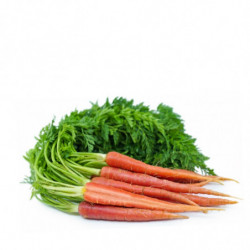Discover the Versatility of Green Thai Chili
Green Thai chili is a fruit belonging to the Capsicum frutescens plant, native to Indonesia, where it is known as cabe rawit or cabai rawit. It is a very spicy chili, which can reach between 50,000 and 100,000 Scoville units (SHU), the scale that measures the heat level of chilies. Its taste is citrusy and floral, and its shape is elongated and narrow, with a smooth surface. Its color is light green when immature, and changes to red when ripe.
Varieties of Green Thai Chili
- Birds Eye Demon: A very spicy variety, which can exceed 100,000 SHU. Its color is bright green and its shape is pointed and curved.
- Thai Cuisine: Widely used in Thai cuisine, where it is called prik kee nu or prik kee noo. Its color is vibrant green and its shape is elongated and straight.
- Rawit: Used in Indonesian cuisine, where it is called cabe rawit or cabai rawit. Its color is dark green and its shape is elongated and slightly curved.
Green Thai chili has many health benefits, as it contains vitamins A, C, and B6, as well as minerals such as potassium, magnesium, and iron. Additionally, the capsaicin that gives it its heat has anti-inflammatory, analgesic, antioxidant, and antibacterial properties. Moderate consumption of green Thai chili can help improve blood circulation, prevent infections, relieve pain, and boost metabolism.
Gastronomic and Historical Importance
Green Thai chili also has great gastronomic and historical importance in Asia, especially in Thailand and Indonesia. It is used to prepare sauces, soups, salads, and other typical dishes such as pad thai or tom yum in Thailand, while in Indonesia it is used to make sambal, a chili paste used as a condiment or base for other dishes. Additionally, green Thai chili is consumed fresh, dried























